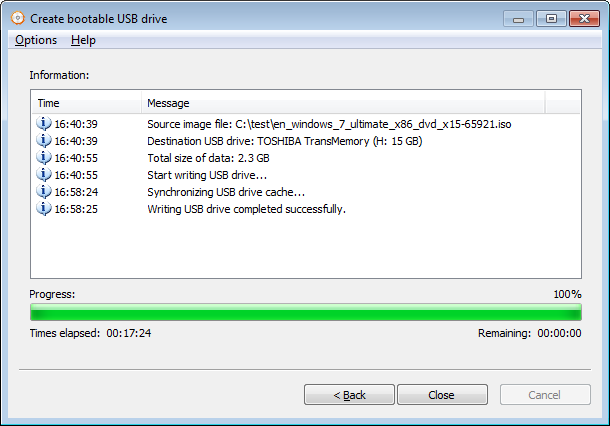

The drive will be formatted and files copied to the flash drive. Now you just have to wait for the process to complete, which usually takes 15-20 minutes. Go ahead and click “Erase USB Device.” If you started with a newly-formatted USB drive, you won’t see this warning. If your USB drive has anything already on it, you’ll next see a warning that it will be formatted and you’ll lose any data stored on the drive. Once you’ve got the right drive selected, click “Begin copying.” If you haven’t inserted it yet, do that now, and then click the Refresh button. Use the drop-down menu to choose the USB flash drive you want to use. Finally, select USB flash drive and wait for the installer to finish. Then run the tool and select Create installation for another PC. On the next page, click “USB device.” The tool can also burn the ISO to a DVD if you need that option. To create a Windows 10 bootable USB, download the Media Creation Tool. Click “Browse” to locate your Windows ISO file and then click “Next.”

Run the tool and give it permission to make changes to your PC. Once you’ve got the tool installed, creating your USB installation drive is a pretty straightforward process. The tool works just fine for Windows 7, 8, and even 10. The description on that page, on the actual download page, and on the tool itself talk a lot about Windows 7 and even XP.
How to create bootable usb windows 7 install#
With your ISO file saved to your computer, your next step is to download and install the Windows USB/DVD Download Tool.
How to create bootable usb windows 7 how to#
RELATED: How to Create a Windows ISO from a Disc Using ImgBurn Step Two: Create Your Installation USB Drive with the Windows USB/DVD Download Tool Be sure to copy anything you want off of it, because this process will erase it. Once you have both your ISO and flash drive in hand, you’re ready to continue. You’ll also need a minimum of a 4GB flash drive to create your installer. If you don’t have Windows installation DVD, you can download ISO files for Windows 10, 8, or 7 directly from Microsoft. If you already have an installation DVD, you can use it to create an ISO file using ImgBurn, a handy little free utility that’s been around forever. Step One: Create or Download an ISO for the Windows Installation Mediaīefore you can create your USB installation drive, you’ll need to have your Windows installation media available as an ISO file.


 0 kommentar(er)
0 kommentar(er)
